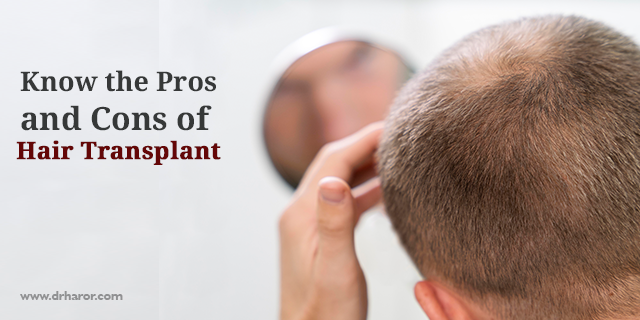What is a Hair Transplant?
A hair transplant is a surgical procedure in which hair is taken from one area of the scalp (the “donor site”) and transplanted to another area of the scalp (the “recipient site”). The most common technique used is called follicular unit transplantation (FUT), in which a strip of skin is removed from the donor site and the hair follicles are then transplanted to the recipient site. Another technique, called follicular unit extraction (FUE), involves removing individual hair follicles from the donor site and transplanting them to the recipient site. Hair transplants are typically done to treat male pattern baldness or other forms of hair loss.
How much does a hair transplant cost?
The cost of a hair transplant can vary widely depending on a number of factors, including the technique used, the number of grafts needed, and expertise of Hair Transplant Clinic. On average, a men or women hair transplant cost range can be from $4,000 to $15,000, with some clinics charging even more.
Follicular Unit Extraction (FUE) is generally considered to be more expensive than Follicular Unit Transplantation (FUT) as it is a more time consuming and labor intensive process. Additionally, the cost can also vary depending on the location of the clinic, with prices generally being higher in urban areas than in rural areas.
It is important to note that hair transplants are considered to be elective procedures and are not typically covered by health insurance. Therefore, it’s important to carefully research and compare the costs of different clinics before making a decision.
Pros of hair transplants:

- Natural looking results: A properly done hair transplant can give a natural looking hairline, and the transplanted hair will grow just like the hair in the donor area.
- Long-term solution: Hair transplants are a permanent solution for hair loss, and the transplanted hair will continue to grow for a lifetime.
- Can restore self-esteem and confidence: For many people, hair loss can be a major source of insecurity and a hair transplant can help to restore self-esteem and confidence.
Cons of hair transplants:
- Expensive: Hair transplants can be quite costly, with prices ranging from $4,000 to $15,000 or more.
- Risk of complications: As with any surgical procedure, there is a risk of complications such as infection, bleeding, or poor healing.
- Requires multiple sessions: A hair transplant may require multiple sessions to achieve the desired results, which can be time-consuming and expensive.
- Not suitable for everyone: Hair transplants may not be suitable for people with severe hair loss or scarring on the scalp.
- Recovery time: Recovery time can vary, but it may take a few weeks for the transplanted hair to grow and for the swelling to subside.

- Medications: Finasteride (Propecia) and minoxidil (Rogaine) are FDA-approved medications that can help to slow or stop hair loss, and in some cases may even promote new hair growth.
- Scalp micropigmentation: This is a non-surgical procedure that involves injecting pigment into the scalp to create the appearance of a full head of hair.
- Scalp reduction: This is a surgical procedure in which a portion of the bald scalp is removed and the remaining skin is stretched over the area to create the appearance of more hair.
- Hairpieces and wigs: These are non-surgical options that can be used to cover up hair loss. Wigs and hairpieces can be made from real hair or synthetic fibers and can be worn on a daily basis or as needed.
- Platelet-rich plasma (PRP) therapy: This is a non-surgical procedure that involves injecting growth factors from the patient’s own blood into the scalp to help promote hair growth.
- Low-Level Laser Therapy (LLLT) : This treatment uses a low-level laser to stimulate hair growth and reduce hair loss.
It’s important to consult with a specialist for personalized advice on which alternative is best for you based on the cause of your hair loss, and your personal goals.
Frequently Asked Questions
- How long do hair transplants last?
Hair transplants are considered to be a permanent solution for hair loss, as the transplanted hair will continue to grow for a lifetime. However, it is important to keep in mind that hair loss is a progressive condition, so hair loss may continue in the surrounding areas even after a transplant.
- What is the success rate of hair transplants?
The success rate of hair transplants depends on a number of factors, including the technique used, the skill and experience of the surgeon, and the individual characteristics of the patient. In general, hair transplants have a high success rate, with most patients achieving a noticeable improvement in their hair density and a natural-looking hairline.
It’s important to note that the success of a hair transplant is also dependent on the patient’s own hair characteristics, such as the density and quality of the donor’s hair, as well as the patient’s age, medical history, and overall health.
- Can a hair transplant procedure fail?
While hair transplants are generally considered to be a safe and effective procedure, there is always a risk that the procedure can fail. This can happen due to a number of reasons such as:
- Implantation failure
- Scarring
- Poor growth:
- Infection
- Unsatisfying results
It’s important to have realistic expectations when considering a hair transplant, and to fully understand the risks and limitations of the procedure. Also, it is important to choose a reputable and experienced surgeon who can provide you with a personalized evaluation and explain the potential risks and success rate.

